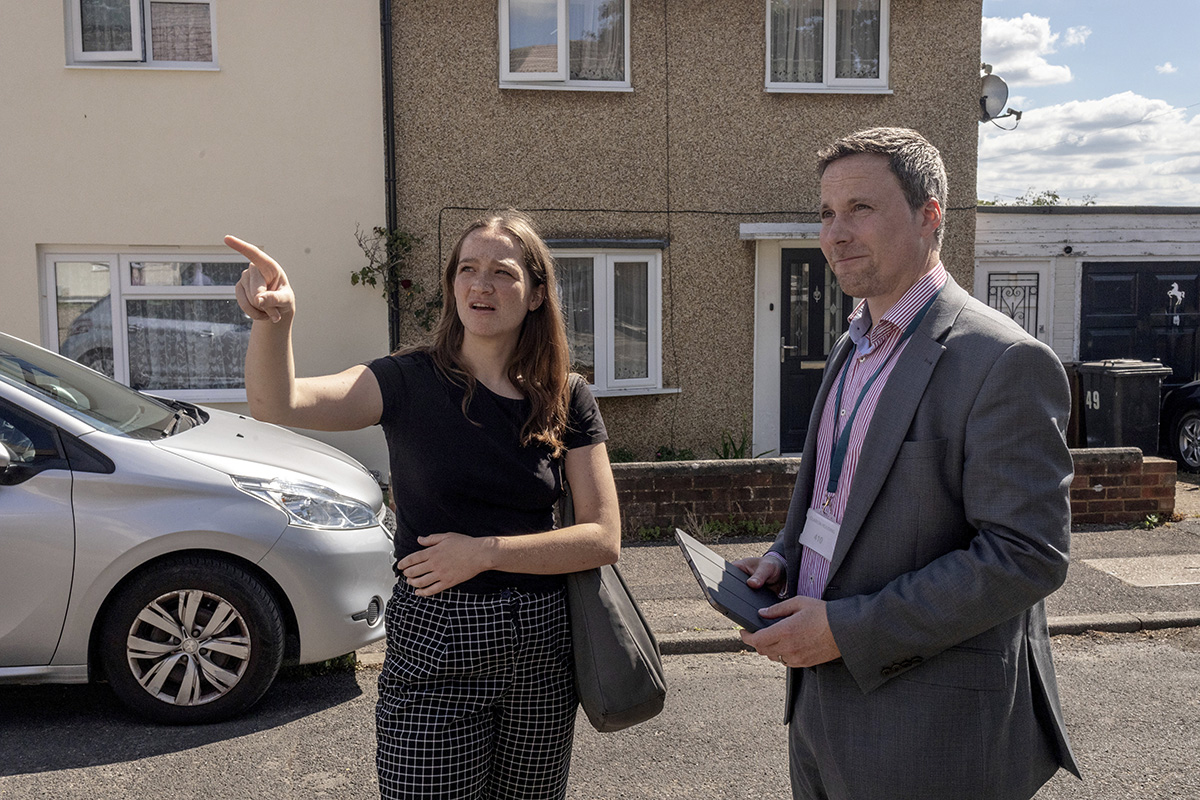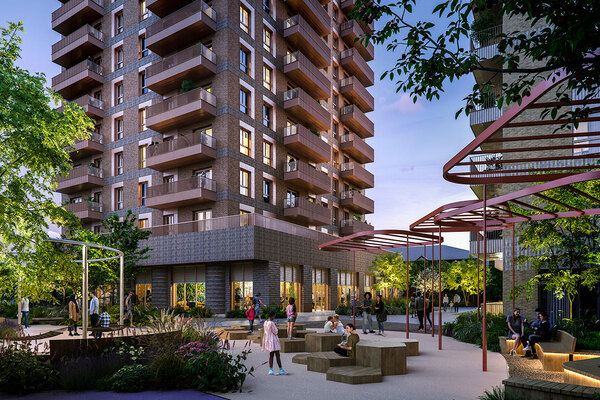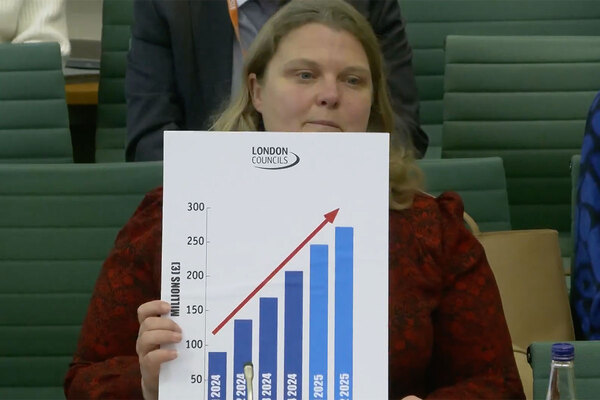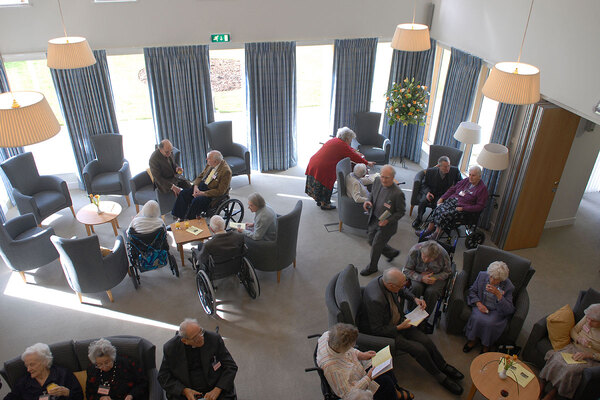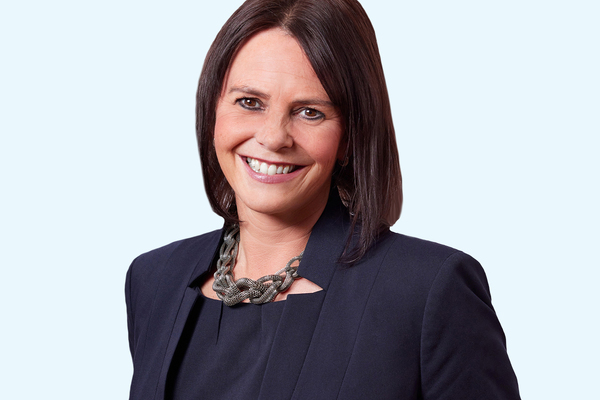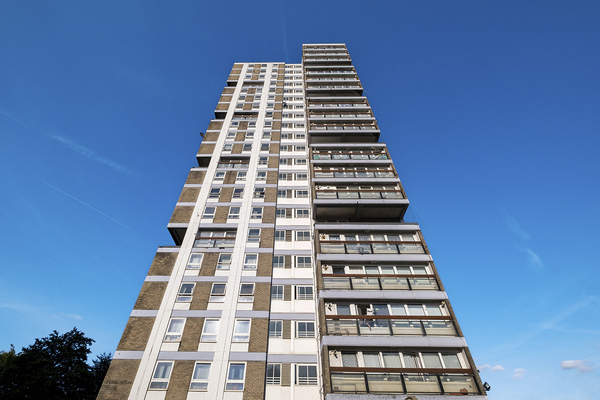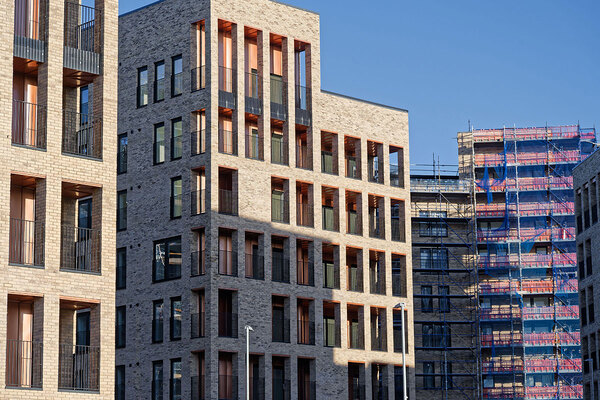What Clarion learned from its retrofit demonstrator
Lucie Heath visits a demonstrator retrofit project that is being funded by the government to find out how it has progressed and what the learnings are for the sector. Photography by SWNS
The Climate Change Committee (CCC), an independent body that advises the government on net zero, recently published a 619-page report assessing how well the UK is doing against its climate targets.
The message from the CCC was clear: the country has made some progress, but will not hit net zero until it resolves a few gaping holes in its strategy. The energy efficiency of housing was highlighted as the one of the main areas where a “shocking gap in policy” exists.
With more than five million homes across the UK, social landlords can play an important role in helping to develop the policies that will see the country’s housing stock retrofitted to a net zero standard.
However, major questions still remain over how this work will be carried out in practice: what technology should landlords use? Who can carry out the work? How much is it all going to cost?
Over the past two years, some in the sector have been attempting to find answers to these questions by participating in the Social Housing Decarbonisation Fund (SHDF) Demonstrator – a £60m fund announced in July 2020 as a precursor to the larger multibillion-pound SHDF that was promised in the Conservative Party’s manifesto in 2019.
One of those landlords is Clarion, which has just completed work on a retrofit project in Kent.
Inside Housing visited the site to find out what the country’s largest landlord has learned from the project.
Decarbonised homes
It is a hot day in July when Inside Housing visits the Trench Wood Estate in Tonbridge, where Clarion has spent the past year installing energy-efficiency measures in the homes it owns there.
It is not hard to spot which houses have had work done; the PV panels on the pitched roofs of the 1960s properties act as a handy identifier. Upon closer inspection, it is clear that the walls of these homes –
a non-traditional solid wall construction – are roughly 20cm thicker than those that have remained untouched.
Clarion received £4.5m in grant as part of the SHDF Demonstrator in a joint bid led by Fenland Council. The association used this to retrofit 60 homes on the estate in Tonbridge, as well as another 60 in Fenland. The total cost of the project was £9.2m, with Clarion covering the other half of the costs.
The work included installing external wall and loft insulation, triple-glazed windows, new doors, a mechanical ventilation system and solar panels. Air source heat pumps have been installed in the homes in Fenland, however Clarion is waiting a few more years to install heat pumps at the Tonbridge scheme, as the boilers are less than five years old.
The benefits to residents living in these homes are clear. The homes in Fenland are Energy Performance Certificate (EPC) Band A. The Tonbridge homes have improved from an EPC Band E to a high B, and will be an A once the heat pumps are installed.
Inside Housing visits the home of Alan Barron, one of the residents who has benefited from the funding. It is immediately noticeable that his home is a comfortable temperature compared with the heat outside.
Mr Barron is pleased with the results in his house, which he said was previously damp and “very cold in the winter”. As the project completed in December, he says it is too soon to be able to say how much the retrofit will cut his energy bills.
However, it has not all been plain sailing and Mr Barron alludes to “issues with transport and materials”, which meant he had scaffolding up around his house for longer than expected.
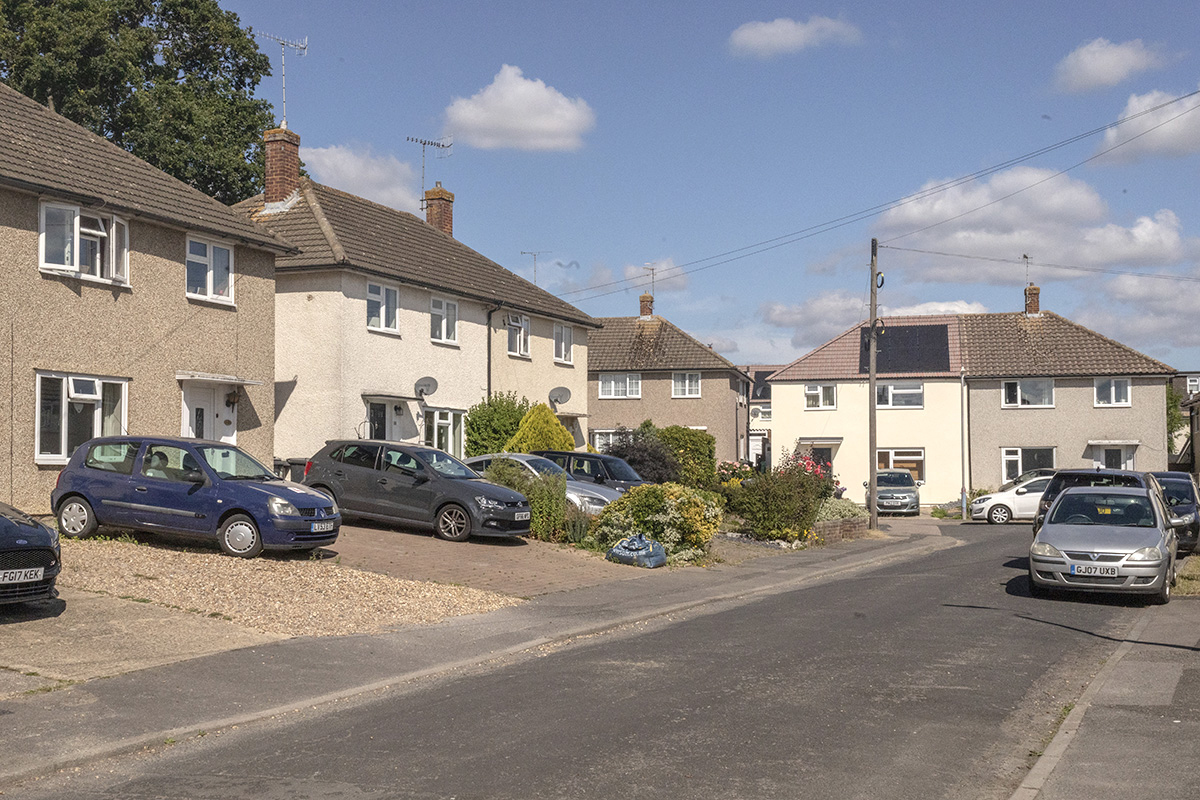
His comments are not surprising. Projects under the SHDF Demonstrator were originally given a deadline of December 2021, however Inside Housing revealed earlier this year that more than half of the schemes had failed to complete work on a single home by this date.
Clarion’s project made more progress than any other that had received funding, but it still failed to complete by the deadline, with the project in Tonbridge just wrapping up at the time of Inside Housing’s visit.
Walking around the estate, we ask Paul Norman, head of asset management at Clarion, the reason for the delays. In response, he lists challenges that will be familiar to many in the sector: COVID-19, Brexit, inflation, skills gaps and supply chain shortages.
While Clarion has been able to deliver this project, albeit with a slight delay, these are major challenges facing the social housing sector as it looks to increase this type of work.
“Having a clear target as a country of what is a net zero-carbon home is unbelievably important… Once you get that, everything else can build off that”
“If someone said, ‘Here is all the money to decarbonise your entire stock’, and they did that to everyone, no one could do it. There simply isn’t the supply chain and the workforce there to deliver it, and in some cases the technology,” Mr Norman says.
His comments echo those made recently by Selvin Brown, director of net zero buildings – domestic at the Department for Business, Energy and Industrial Strategy (BEIS). Speaking at the Housing 2022 conference in June, he warned that the department was at risk of having to return decarbonisation funding to the Treasury if landlords are not able to ramp up the number of homes they are retrofitting.
In a way, it is understandable that projects under the SHDF Demonstrator were unable to complete by the deadline. That said, the point of the programme was to learn lessons before the £3.8bn SHDF is rolled out.
When asked what the most important things are that Clarion has learned from the SHDF Demonstrator, Mr Norman says the 125,000-home landlord has learned “a lot”, of which the “customer piece has been the absolute biggest”.
The demonstrator has “changed the way [Clarion] thinks” about how early it engages residents and how it engages both during and after the work, he says, adding that this is especially important when heat pumps are being installed.
“The engagement you have to do upfront is so much more significant than you’d have to do with a typical kitchen or bathroom programme,” he explains.
Tenants need to be informed about certain things. For example, if they have solar panels, it is best to use appliances such as washing machines while the sun is shining to make best use of the energy being generated.
Clarion has also gained some practical knowledge around the design of retrofit projects. It is now working on a second project, funded through Wave 1 of the SHDF, which followed the demonstrator fund. This £18.6m project will retrofit 450 homes in Fenland, Tonbridge and Merton. This time, Clarion is contributing more of the funds: £13.4m, and £5.2m comes from the BEIS. But Mr Norman believes the team may be able to design out the cost of inflation.
However, there is no escaping the fact this work is going to cost a lot. Mr Norman explains that Clarion is currently in the process of trying to break down different housing archetypes and look at “some generic kind of specifications for this type of property”, which can then be used to estimate costs.
Mr Norman also admits that one of the lessons Clarion has learned in recent years is how difficult it is to separate housing into different archetypes, due to the unique nature of different properties.
The demonstrator project started with just two typical base archetypes. During the project, this grew into 35 different archetypes due to the significant differences that even small variances on a building can have.
The cost of completing upgrades to homes within the demonstrator scheme have ranged from £55,000 to £80,000, depending on what measures are being taken and the type of property being worked on. Clarion says it is reasonable to assume that the cost to decarbonise its portfolio will exceed £1bn.
All of these lessons will put the association in good stead as the SHDF is rolled out more widely.
Second bid
Meanwhile, Clarion is also in the process of formulating its bid for Wave 2 of the SHDF, which the BEIS has said will open for bidding at the end of the summer. It is the first wave of the SHDF that housing associations are able to enter directly, rather than partnering with local authorities. Clarion is planning to use this opportunity to package together and improve the energy efficiency of the roughly 3,000 properties it owns that have an EPC rating below Band D.
Mr Norman says Clarion is also looking to partner with two or three smaller councils or housing associations as part of its bid, in response to the likely requirement from the BEIS that bidders must retrofit a minimum of 100 properties.
Overall, Mr Norman is complimentary of the BEIS and of the way the SHDF has been run, calling the scheme “the most collaborative programme I’ve ever worked on from a government perspective”.
However, there is always more the government can do for the sector. “We always want more. It goes with the territory. More money, longer to deliver, more certainty – all of those things,” Mr Norman says.
For once, however, money is not the main thing Mr Norman wants to see ministers commit to. For him, a proper definition of net zero housing is really key.
“Having a very clear target as a country of what is a net zero-carbon home is unbelievably important,” he says. “That’s the key bit because once you get that, everything else can build off that.”
Mr Norman says Clarion and fellow landlords in the G15 group of large London housing associations are currently discussing what a clear net zero housing target might look like, although trying to do so within such an uncertain economic environment is tricky.
Mounting inflation has made the cost of retrofit work much more expensive for social landlords at a time when soaring energy bills means this work is more essential than ever for tenants.
Clarion currently has a strategy that all of its stock must have a minimum Standard Assessment Procedure (SAP) rating of 72 (which would be an EPC Band C) by 2040, however Mr Norman says “what has happened in the past six months” has likely completely changed that. Clarion clarifies that all homes will be EPC Band C by 2035 in line with the government’s target – except in properties where it is not possible at present.
“We came up with SAP 72 based on how much we think it could cost and the benefit to the customer, as in we can get their bills to a certain level,” Mr Norman explains. “That’s completely out of the window now, because that was done in 2019. So I think we have to look at different ways of how we can approach it or be a bit more flexible with targets.”
Clarion says this was because SAP numbers are calculated on a proxy energy price that no longer bares resemblance to today’s cost of living – what was affordable in 2019 will be different now. It suggests other metrics may be better, such as space heat demand.
In response to the cost of living crisis, Clarion is looking at how it can be more responsive with its retrofit programme. This would involve packaging together asset management work with other support, such as advice and help to access funding, for residents who are struggling to make ends meet.
The sector is facing a huge challenge when it comes to decarbonising its housing stock, but the SHDF Demonstrator is proving that the work can be done and can hugely benefit residents during a very challenging time for many. Housing associations must learn from each other and rise to the challenge.
“This is the right thing to do for our customers, for our assets, for society and for our climate,” says Mr Norman.
Sign up to our Best of In-Depth newsletter
We have recently relaunched our weekly Long Read newsletter as Best of In-Depth. The idea is to bring you a shorter selection of the very best analysis and comment we are publishing each week.
Already have an account? Click here to manage your newsletters.
